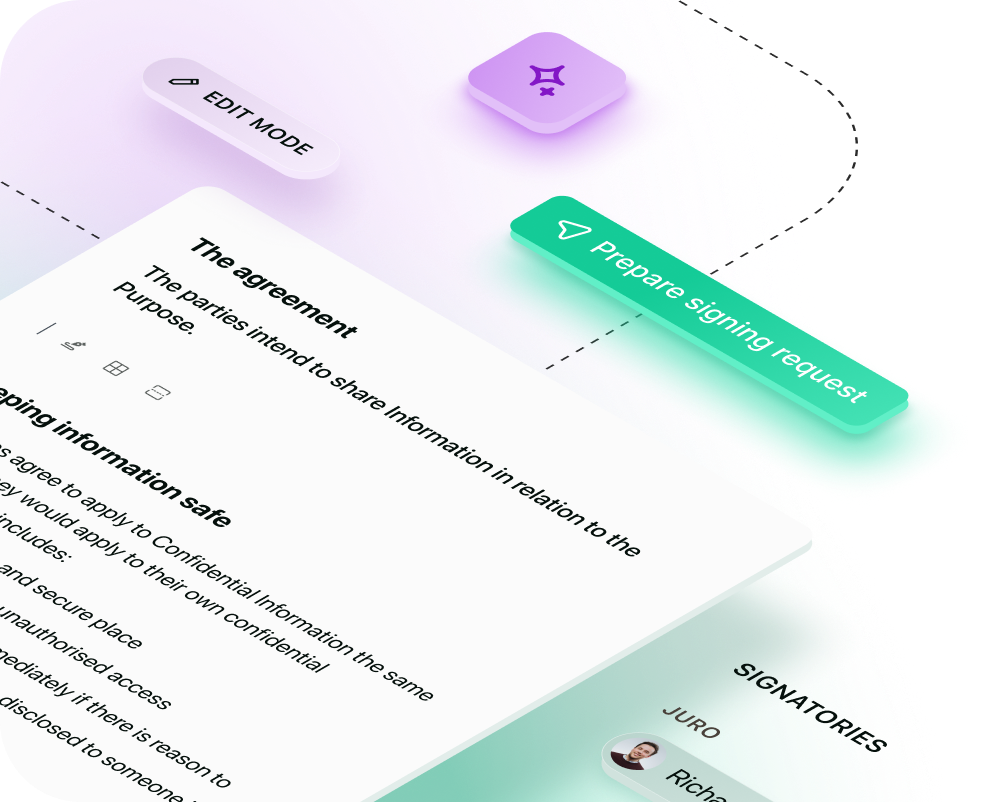Solutions
Customer Support
Resources
Simplify the debt resolution process with a debt settlement agreement template that allows creditors and debtors to formalize repayment terms clearly and legally.




Debt settlement agreements play a crucial role in business financial management. When handled effectively, they can resolve financial disputes and restore business relationships.
This article will guide you through the essentials of debt settlement agreements, including what they are, their purpose and how to manage them efficiently.
A debt settlement agreement is a legally binding document between a debtor and a creditor. It outlines the terms under which the debtor agrees to pay a reduced amount to settle an outstanding debt. This agreement benefits both parties by resolving the debt and avoiding costly and time-consuming legal action.
The primary purpose of a debt settlement agreement is to settle an outstanding debt for less than the full amount owed. Here’s why they are used:
Lawyers or legal departments often draft and review agreements to ensure they comply with relevant laws and protect the interests of their clients.
Financial advisors provide advice on the financial implications of the debt settlement and help negotiate terms that are financially viable.
Both the creditor and the debtor are directly involved in negotiating and agreeing on the settlement terms.
Debt settlement agreements can be used in various scenarios, including:

A comprehensive debt settlement agreement template should cover the following elements:
Parties involved. Identify clearly the debtor and creditor, including their legal names and contact information.
Debt details. Specify the original amount owed, including any interest or penalties accrued.
Settlement amount. State the agreed-upon settlement amount that the debtor will pay to the creditor.
Payment terms. Outline the payment schedule, including the amounts and due dates of each instalment.
Release of claims. Include a clause that releases the debtor from any further liability once the settlement amount is paid.
Confidentiality. A confidentiality clause to ensure that the terms of the agreement are not disclosed to third parties.
Governing law. Specify the jurisdiction whose laws will govern the agreement.
Signatures. Ensure that both parties sign the agreement, indicating their acceptance of the terms.
Debt settlement agreements are typically managed through the following steps:
Managing debt settlement agreements can be challenging due to:
Managing debt settlement agreements can be streamlined with Juro's contract management software. Here’s how Juro can help:
Juro’s AI-native platform automates repetitive tasks involved in contract creation and management. This includes drafting standard contract clauses, highlighting key terms, and suggesting edits. Automation reduces manual effort, allowing legal and business teams to focus on strategic activities and accelerate the contract lifecycle.

Juro fosters seamless collaboration across teams within a single, browser-native workspace. This eliminates the need for multiple platforms and reduces the chances of miscommunication or lost documents. Teams can negotiate, edit and approve contracts in real-time, ensuring faster turnaround times.
Juro enables business teams to self-serve on routine contracts from the tools they already use daily. This feature reduces the dependency on legal teams for routine contract tasks, freeing up legal professionals to handle more complex issues and moving contracts through the pipeline more quickly.

Juro’s platform offers robust tracking and analytics features, giving teams visibility into the status of each contract at any stage. This transparency helps in identifying bottlenecks and resolving issues swiftly, further speeding up the contract management process.
Juro’s AI-native contract automation platform empowers all teams to create, agree, execute and manage contracts up to 10x faster than traditional tools. To find out more, hit the button below to book your personalized demo.
Juro is the #1-rated contract platform globally for speed of implementation.


Juro embeds contracting in the tools business teams use every day, so they can agree and manage contracts end-to-end - while legal stays in control.
Book your demo